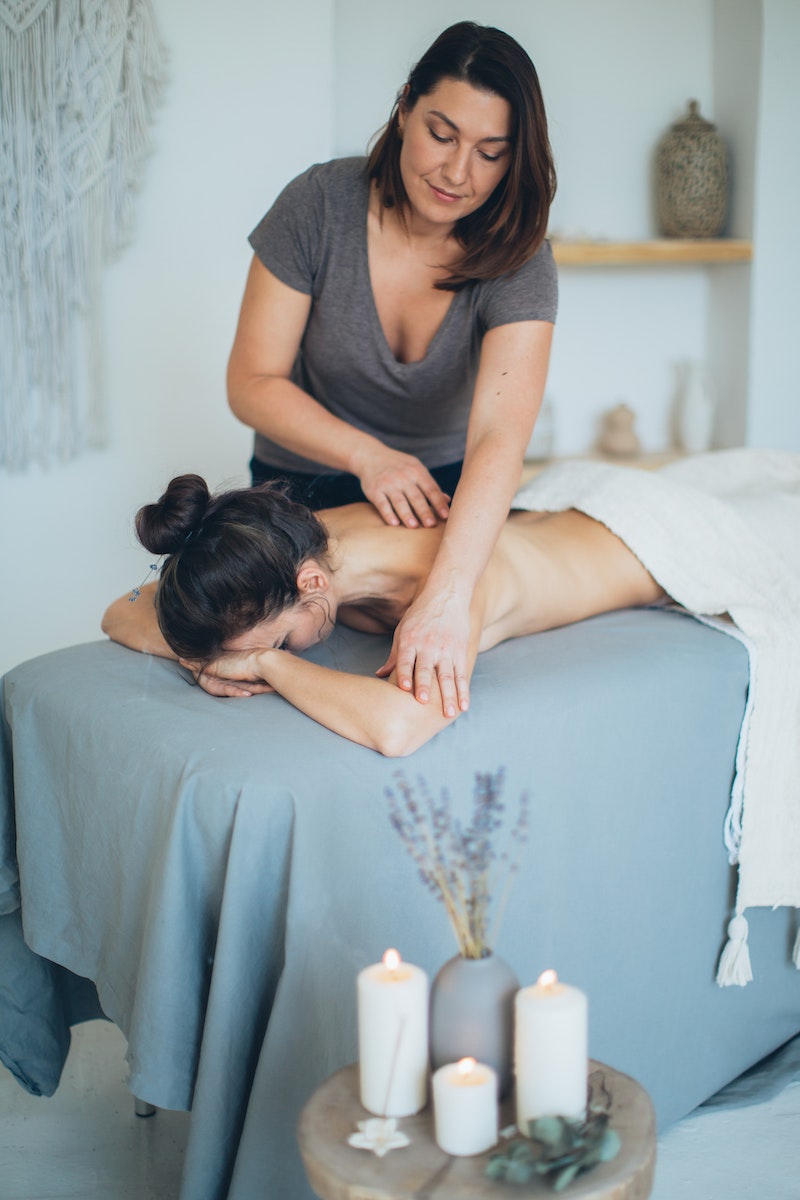Having a strong and powerful grip is essential for various daily activities, whether it is opening jars, holding onto objects, or performing physical exercises. A weak grip can limit your ability to accomplish simple tasks and hinder your overall functionality. This is where gripping tools come to the rescue, allowing you to enhance your grip strength and improve your daily function. In this article, we will explore the benefits of using gripping tools and how they can empower your grip.
Understanding the Importance of Grip Strength
Before delving into the world of gripping tools, it’s crucial to understand the significance of grip strength. Grip strength is not only essential for athletes and fitness enthusiasts but for every individual striving to perform daily activities effortlessly. It enables us to grasp and manipulate objects, maintain stability, and prevent accidents or injuries.
A strong grip is particularly important for older adults, as it can help them maintain their independence and carry out everyday tasks such as opening doors, holding utensils, or using tools. Grip strength also plays a vital role in sports performance, allowing athletes to firmly hold equipment, maintain control during movements, and prevent injuries caused by slippage.
Moreover, grip strength is closely linked to overall upper body strength and functional abilities. Research has shown that individuals with a stronger grip tend to have better muscle mass, bone density, and overall physical performance. Therefore, improving grip strength can have a positive impact on various aspects of your life.
The Benefits of Using Gripping Tools
Gripping tools offer a wide range of benefits that can significantly contribute to improving your grip strength and overall functionality. Let’s explore some of these advantages:
1. Increased Grip Strength
Gripping tools are specifically designed to challenge your hand and forearm muscles, encouraging them to grow stronger. Regular use of these tools can help increase your grip strength, making it easier for you to perform various tasks that require a firm grip.
By incorporating gripping tools into your routine, you can target specific muscle groups involved in gripping, such as the flexor muscles in your fingers and the extensor muscles in your forearms. These tools provide resistance and require repetitive movements, which help build strength and endurance in these muscles over time. As your grip strength improves, you will notice a significant difference in your ability to hold objects firmly and perform activities that previously seemed challenging.
2. Enhanced Dexterity and Coordination
Using gripping tools can improve your dexterity and hand-eye coordination. These tools often require precise movements and control, that when practiced consistently, can enhance your ability to manipulate objects with accuracy and finesse.
For example, hand grippers and grip strengthening balls require you to squeeze and release them in a controlled manner. This not only strengthens your grip but also enhances your finger coordination and control. Similarly, using resistance bands or grip strengthener rings can improve your ability to open and close your hands with precision, leading to improved dexterity.
Enhanced dexterity and coordination can have a positive impact on various daily activities, such as writing, typing, playing musical instruments, or participating in sports. It allows you to have better control over your movements and perform tasks with greater efficiency.
3. Injury Prevention
By strengthening your grip, gripping tools can help reduce the risk of injuries. A strong grip provides better stability and control, decreasing the likelihood of accidents during physical activities or when handling heavy objects.
When you have a weak grip, you are more prone to dropping objects or losing control, which can result in accidents and injuries. However, by regularly using gripping tools, you can improve your grip strength and enhance your ability to hold onto objects securely. This can be particularly beneficial in situations where a strong grip is essential for safety, such as when using power tools, participating in sports activities, or carrying heavy loads.
Additionally, gripping tools also help in preventing overuse injuries, such as tendonitis or carpal tunnel syndrome. These tools allow you to strengthen and condition the muscles and tendons in your hands and forearms, reducing the strain on these structures during repetitive tasks.
4. Rehabilitation and Physical Therapy
Gripping tools are commonly used in rehabilitation and physical therapy settings to aid in the recovery process from hand and wrist injuries. These tools assist in rebuilding strength, increasing flexibility, and restoring functionality to the affected area.
For individuals recovering from conditions or injuries that affect their grip strength, such as fractures, sprains, or surgeries, gripping tools offer a targeted and controlled way to regain strength and mobility. Physical therapists often incorporate various gripping tools into their treatment plans to help patients improve their hand and forearm function.
These tools can be gradually introduced and customized according to the individual’s needs and abilities. They provide a safe and effective means of rehabilitation, allowing patients to regain confidence in their grip and perform daily activities with greater ease.
Popular Gripping Tools
Now that we understand the benefits of gripping tools, let’s explore some popular options that can help you empower your grip:
1. Hand Grippers
Hand grippers are portable and easy-to-use tools that primarily focus on strengthening the muscles in your hands and forearms. They consist of two handles connected by a spring mechanism that you squeeze together to create resistance. Hand grippers come in varying levels of resistance, allowing you to gradually increase the challenge as your grip strength improves.
Hand grippers provide a convenient way to perform grip exercises anywhere, anytime. They are compact and can easily fit into your bag or pocket, making them ideal for individuals who want to strengthen their grip on the go. Regular use of hand grippers can help target the muscles responsible for hand closure and finger flexion, improving grip strength and endurance.
2. Grip Strengthening Balls
Grip strengthening balls, also known as stress balls or therapy balls, are compact and versatile tools that can be used to improve grip strength and relieve stress. These balls are designed to be squeezed repeatedly, engaging the muscles in your hands and forearms. They come in different sizes and textures, offering various levels of resistance and sensory feedback.
Using grip strengthening balls not only strengthens your grip but also provides a therapeutic effect. The repeated squeezing motion can help release tension and reduce stress. These balls are commonly used in stress management techniques, as they offer a simple and effective way to relieve anxiety and promote relaxation.
Furthermore, grip strengthening balls can be used for rehabilitation purposes, particularly for individuals recovering from hand or wrist injuries. They allow for controlled and progressive strengthening of the affected muscles and tendons, aiding in the recovery process.
3. Resistance Bands
Resistance bands are an excellent tool for overall strength training, including grip strengthening. These elastic bands can be wrapped around your hands or fingers, providing resistance as you open and close your hands against the band’s tension. By incorporating resistance bands into your workout routine, you can target multiple muscle groups in your hands, wrists, and forearms.
Resistance bands offer a versatile and adaptable way to challenge your grip. They come in different resistance levels, allowing you to adjust the intensity of your exercises based on your current strength. Whether you are a beginner or an advanced user, resistance bands can provide a progressive and effective means of strengthening your grip.
In addition to grip strength, resistance bands also help improve overall upper body strength and stability. They can be used to target other muscle groups, such as the shoulders, back, and chest, providing a comprehensive workout experience.
4. Grip Strengthener Rings
Grip strengthener rings are small, circular tools made of rubber or silicone that are used to develop finger and hand strength. These rings are typically squeezed and stretched using individual fingers or the entire hand. They are available in different resistance levels, making it easy to customize your training based on your current grip strength.
Using grip strengthener rings provides a focused and isolated workout for your fingers and hands. The different resistance levels allow you to gradually progress and challenge your grip strength as you improve. These rings can be used in various ways, such as squeezing them together, stretching them apart, or performing finger extensions.
Grip strengthener rings are particularly beneficial for activities that require finger strength, such as playing musical instruments, rock climbing, or performing fine motor tasks. Regular use of these rings can help improve finger coordination, dexterity, and overall grip strength.
5. Wrist and Forearm Exercisers
Wrist and forearm exercisers are specialized tools that specifically target the muscles in your wrists and forearms. They typically consist of a handle attached to a weighted object, such as a spinning wheel or a ball. By rotating or rolling the handle, you engage and strengthen the muscles responsible for grip and wrist stability.
These exercisers provide a unique way to strengthen the muscles in your wrists and forearms, which are often neglected in traditional grip training. By targeting these specific muscle groups, you can improve your overall grip strength and wrist stability.
Wrist and forearm exercisers come in various designs and configurations, allowing you to choose the one that suits your needs and preferences. Some exercisers focus on rotational movements, while others emphasize flexion and extension. Incorporating these tools into your grip training routine can help you develop well-rounded strength and stability in your hands and forearms.
Incorporating Gripping Tools into Your Routine
To effectively empower your grip and elevate your daily function, it’s crucial to incorporate gripping tools into your routine in a structured and progressive manner. Here are a few tips to help you get started:
-
Start with a Warm-Up: Before using gripping tools, warm up your hands and forearms by performing gentle stretches and rotations to increase blood flow and flexibility. This will prepare your muscles for the upcoming exercises and reduce the risk of injury.
-
Gradually Increase Resistance: Begin with gripping tools that offer lower resistance and gradually progress to higher levels as your grip strength improves. This progressive approach will prevent overexertion and promote steady growth. Listen to your body and be mindful of any signs of discomfort or strain.
-
Consistency is Key: Consistently use gripping tools as part of your routine, aiming for at least three to four sessions per week. Regular practice will yield optimal results and ensure long-term benefits. To keep yourself motivated, set specific goals and track your progress over time.
-
Listen to Your Body: Pay attention to any discomfort or pain while using gripping tools. If you experience any unusual sensations or persistent discomfort, consult with a healthcare professional to rule out any underlying issues. It’s important to exercise caution and not push yourself beyond your limits.
-
Combine with Overall Strength Training: To maximize your grip strength, consider integrating gripping tools into your overall strength training regimen. Exercises such as deadlifts, pull-ups, and farmer’s walks can further challenge your grip and promote functional strength. By incorporating gripping tools into compound exercises, you can target multiple muscle groups simultaneously.
Remember, consistency and patience are key when it comes to improving grip strength. It may take time to see significant improvements, but with regular practice and proper technique, you can empower your grip and enhance your daily function.
Empower Your Grip, Enhance Your Life
Gripping tools offer a practical and effective way to empower your grip and elevate your daily function. By incorporating these tools into your routine and following a structured approach, you can enhance your grip strength, improve dexterity, and reduce the risk of injuries. So, grab those gripping tools and embark on a journey to a stronger and more capable you!
Note: The content above is provided in markdown format.
1. Why is grip strength important?
Grip strength is important because it enables us to grasp and manipulate objects, maintain stability, and prevent accidents or injuries. It is essential for performing daily activities effortlessly and plays a vital role in sports performance.
2. How can gripping tools increase grip strength?
Gripping tools challenge your hand and forearm muscles, encouraging them to grow stronger. Regular use of these tools targets specific muscle groups involved in gripping, such as the flexor muscles in your fingers and the extensor muscles in your forearms. These tools provide resistance and require repetitive movements, helping build strength and endurance over time.
3. Can gripping tools improve dexterity and coordination?
Yes, using gripping tools can improve dexterity and hand-eye coordination. These tools often require precise movements and control, which, when practiced consistently, enhance your ability to manipulate objects with accuracy and finesse. Grip strengthening balls, hand grippers, resistance bands, and grip strengthener rings are examples of gripping tools that can improve dexterity and coordination.
4. How can gripping tools help with rehabilitation and physical therapy?
Gripping tools are commonly used in rehabilitation and physical therapy settings to aid in the recovery process from hand and wrist injuries. These tools assist in rebuilding strength, increasing flexibility, and restoring functionality to the affected area. They offer a targeted and controlled way to regain strength and mobility, allowing patients to perform daily activities with greater ease.









